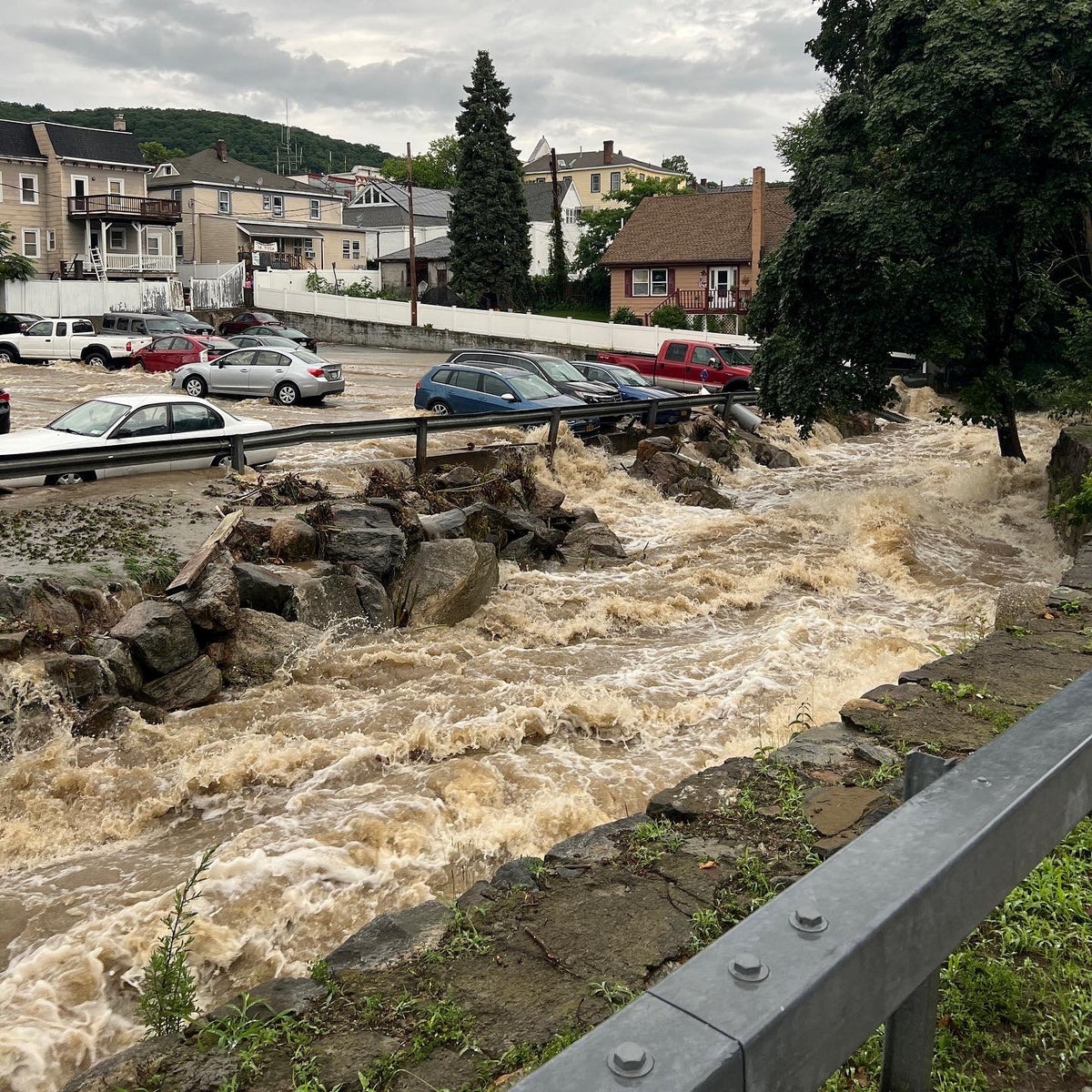
Rescue teams raced to Vermont on Monday after heavy downpours across the Northeast washed out roads and forced evacuations. One woman was killed in New York and dozens of others had to be rescued from submerged cars.
Torrents poured through the verdant landscape and small towns of the state after Vermont Governor Philip Scott declared a state of emergency on Sunday. He told a press conference that “this may be just the start of what we’ll see as rainfall continues and will worsen over the next several hours”.
Mike Cannon of Vermont Urban Search and Rescue said crews from North Carolina, Michigan and Connecticut were among those helping to get to towns that have been unreachable since torrents of rain belted the state overnight.
Mr Cannon said the hardest hit areas are along the mountainous region of the Green Mountains in the state’s southern and central counties. The towns of Londonderry and Weston were inaccessible, and rescuers were heading there to do welfare checks. A state park in Plymouth was being evacuated, and water levels at several dams were being monitored.
On Sunday, video footage showed floodwaters surging down residential streets after a large storm system dumped rain across the Hudson Valley on its slow trudge east.
More heavy downpours were expected across the US Northeast on Monday with flash flood warnings also in place for parts of Connecticut and Massachusetts. Some areas could receive as much as five inches of rain, according to the National Weather Service (NWS).
The body of a woman in her 30s was found in the Hudson Valley by rescue teams. She drowned after being swept away in the floods while trying to evacuate her home, Orange County Executive Steven Neuhaus told WABC-TV.
“Her house was completely surrounded by water,” Mr Neuhaus said. “She was trying to get through (the flooding) with her dog,” he added, “and she was overwhelmed by tidal-wave type waves.”
Many roads were inundated with flooding and several bridges collapsed, according to law enforcement agencies, with early estimates of millions of dollars in damage.
“Our town is completely cut off from the rest of the world right now due to mudslides, sinkholes, washed away roads, flooding, brick walls crumbling and more,” Fort Montgomery resident Kristen Dyroff O’Dell told NBC News.
“I’m separated from my kids right now in Monroe at a friend’s house after spending five hours trying multiple ways to get to Fort Montgomery. Every route was impassable.”
New York Governor Kathy Hochul declared a state of emergency on Sunday for Orange County, around an hour north of New York City, where “life-threatening flooding” developed in a matter of hours.
“The amount of water is extraordinary and it’s still a very dangerous situation,” Ms Hochul said.
“My biggest concern is the fact that most people’s lives that are lost during a flood event occur because they’re in their vehicles – not in their homes, but in their vehicles. And I want people to be very cautious about not going into a road that’s closed or if you see any running water,” she said.
The area around West Point in the Hudson Valley got more than 7.5 inches of rainfall over six hours on Sunday, according to preliminary data from the National Oceanic and Atmospheric Administration (NOAA).
A flood watch was in place until 6am on Monday in New York City with officials emphasising the dangers to those in low-lying areas with poor drainage systems and proximity to rivers and streams.
City officials urged residents to consider moving to higher floors to protect themselves as heavy rain in “may cause rapid, life-threatening flooding to basements”.
Attributing the role of the climate crisis in individual flooding events takes significant scientific analysis. However, as the planet warms, more moisture is held in the atmosphere, which means that storms bring the possibility of a lot more rain.







